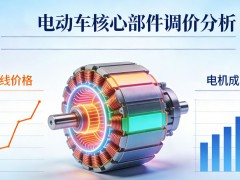古罗马诗人卡图卢斯(Catullus)曾在诗中写下“吞食道路”,作为旅行的隐喻。不过,如果英国政府对一项前景广阔的新工具的试运行成功的话,从公路汲取能量的想法或将成为现实。
Off-road trials of “dynamic wireless power transfer” technology are expected to start later this year and run for 18 months, Highways England and Transport Minister Andrew Jones announced. The government will install the devices under test roads and in vehicles, and determine if the charging could work on Britain’s busiest roadways. Mobile charging would solve one of the biggest hurdles to electric vehicle use — staying charged on long drives.
英格兰公路公司(Highways England)和英国交通部长安德鲁•琼斯(Andrew Jones)近日宣布,“动态无线电力输送”技术的越野试验预计在今年晚些时候开始,测试期为18个月。政府将在测试段公路路面下和测试车辆上安装相应设备,以确定在英国最繁忙的路面上能否获得预期的充电效果。移动充电将消除电动车辆普及的最大障碍之一,就是在长距离驾驶时保持电量充足的问题。
The U.K. has already tested a bunch of different approaches to this technology and identified versions that work and are ready to manufacture. In basic terms, the system has power lines connected to coils under the surface of a road, which then transmit the electricity through the air to a receiver coil in a car. Simply driving down the stretch of road in a properly-equipped electric or hybrid-electric vehicle will power up the batteries.
英国政府已经测试了应用该技术的不同办法,确定了其中行得通的方案,准备投入生产。简单地讲,这个系统将输电线和路面下的线圈相连接,通过空气将电能传输给汽车里面的接收线圈。安装了相应设备的电动车或混合动力车只需在这种路面上行驶便可为电池充电。
The power transfer could potentially work for all types of vehicles, the report notes, and since it goes under the road, it won’t require building any contraptions above ground that could increase risks of collision or electric shock. The wireless transfer is less cluttered and invasive than the overhead cables used for city trains, trolleys, and a prototype zero-emission highway in L.A.
报告中指出,这项电力输送技术有可能适用于各种类型的交通工具,因为它是安装在地下的,无需在地面建设设施,这也就减少了碰撞和电击的风险。比起城铁、有轨电车以及洛杉矶的零排放高速公路原型使用的接触网,这种无线传输更加整洁与安全。
If this works for the highways of Britain, it just might change the game for long-distance EV travel. A full charge of BMW’s i3, for instance, lasts 81 miles; it’s 84 miles for the Nissan Leaf and 38 miles gas free for the Chevy Volt. Those ranges are enough to cover most daily commutes, but insufficient for long road trips. Stopping for hours to charge up on the side of a highway isn’t going to make you feel much better about saving the earth. Picking up a charge without stopping, though, is one of the cooler things you could ask for from automotive refueling practices.
如果这一技术在英国的公路上得以实施,或将改变电动汽车的长途旅行。比如,一辆充满电的宝马i3可以跑81英里,日产聆风(Nissan Leaf)可以跑84英里,雪佛兰伏特(Chevy Volt)不用汽油能跑38英里。以上这些距离足以应付多数日常通勤,但长距离驾车旅行恐怕就不行了。为了充电停在公路边上好几小时,即便是节约了能源也并不会令你感到多好过。不过,说到给汽车充电这件事,无需停车即可充电是你能期待的最酷的事情之一。
Charging roads could pair well with another developing technology: street surfaces that generate their own power with solar panels. The Dutch SolaRoad bike path does that for a few hundred feet; in the U.S., Solar Roadways technology is planning for tests in sidewalks and parking lots in Idaho. Perhaps the smart roads of the future will not just make their own energy from the sun but transmit it wirelessly to a zippy fleet of EVs.
充电公路可以与另一项开发中的技术实现很好的配合,即通过太阳能面板产生能量的路面。荷兰有一条几百英尺长的太阳能自行车道使用了该技术。在美国,太阳能公路技术计划在爱达荷州的人行道和停车场进行测试。或许在未来智能公路不仅可以转化太阳能,还可以将电力无线传输给一辆辆电动汽车。






